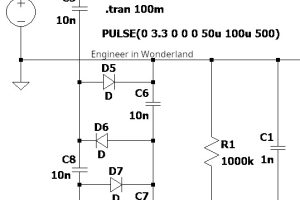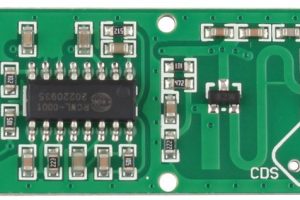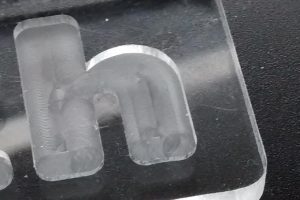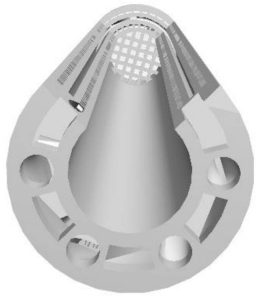 In need of a small high-temperature chemical reaction vessel with a lot of detailed features, BASF turned to Bosch Advanced Ceramics and the Karlsruhe Institute of Technology (KIT).
In need of a small high-temperature chemical reaction vessel with a lot of detailed features, BASF turned to Bosch Advanced Ceramics and the Karlsruhe Institute of Technology (KIT).
Between the three organisations, they developed a way to 3d print what was needed.
The result is 107mm long and 16mm in diameter, with 500μm channels in which the chemical reactions occur, and other features down to 300μm.
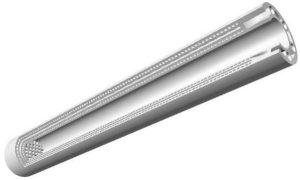 Aluminium oxide was chosen for the structure because of its strength, and resistance to temperature, abrasion and corrosion – plus its thermal conductivity (37W/mK) for temperature control and low thermal expansion (7×10-6/K) for minimal distortion in use – the latter particularly because the way the vessel is cooled during use causes a temperature gradients of hundreds of Kelvin per mm.
Aluminium oxide was chosen for the structure because of its strength, and resistance to temperature, abrasion and corrosion – plus its thermal conductivity (37W/mK) for temperature control and low thermal expansion (7×10-6/K) for minimal distortion in use – the latter particularly because the way the vessel is cooled during use causes a temperature gradients of hundreds of Kelvin per mm.
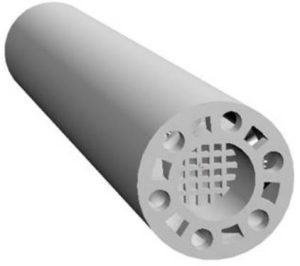 It is also translucent, allowing optical monitoring of internal processes.
It is also translucent, allowing optical monitoring of internal processes.
As ceramics are printed from powder and a binder, heat treatment is required after printing to remove the binder and sinter the powder into a solid, without the powder falling apart before it sticks.
Virtual parts also have to be pre-distorted prior to 3d printing to deliver the correct final size and shape after shrinkage and distortion during heat treatment.
According to Bosch, 3d printing was the only reasonable way the part could have been made.
 Electronics Weekly Electronics Design & Components Tech News
Electronics Weekly Electronics Design & Components Tech News

